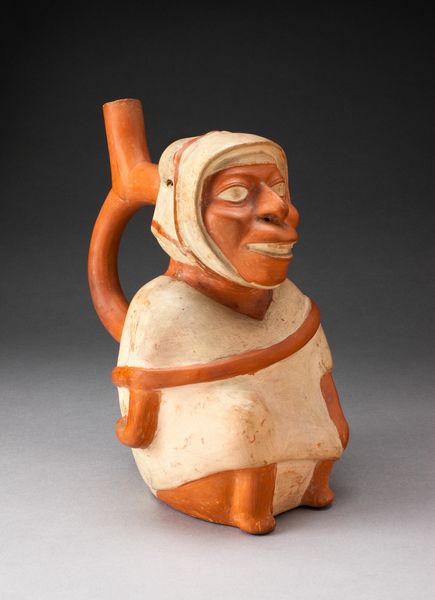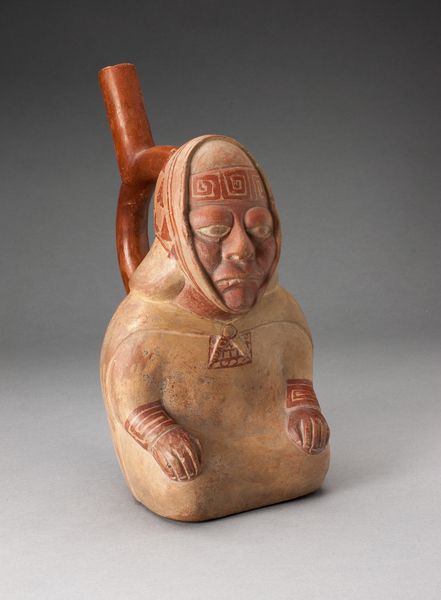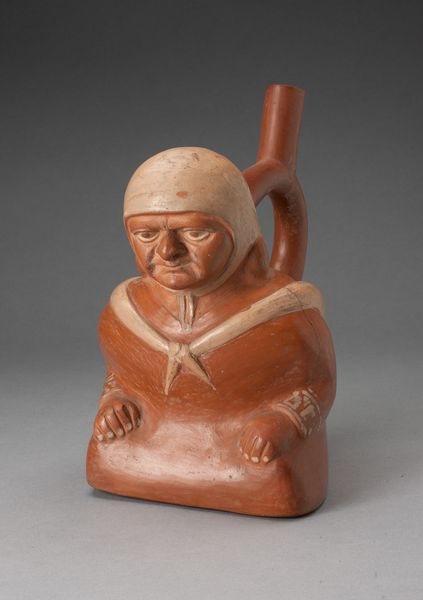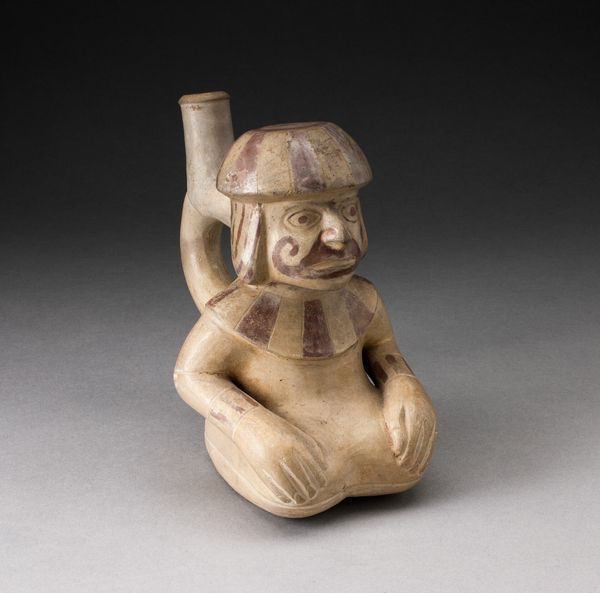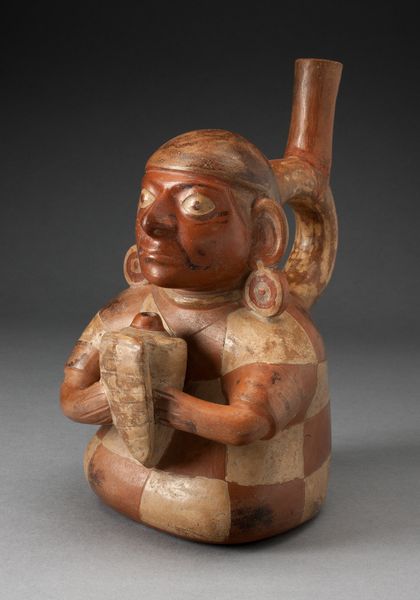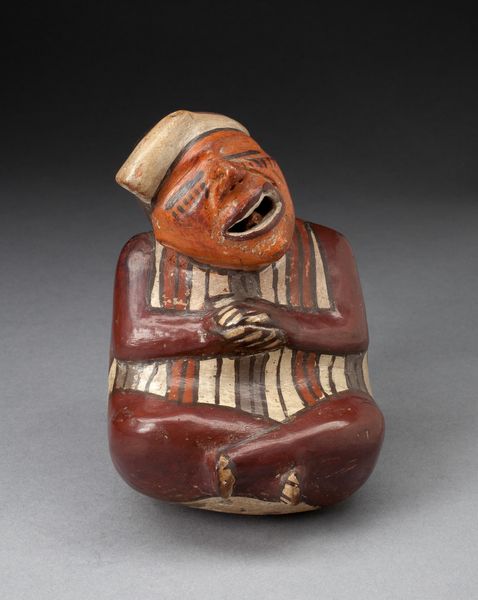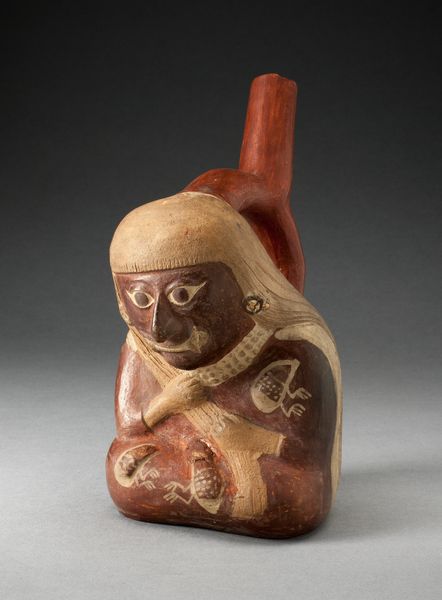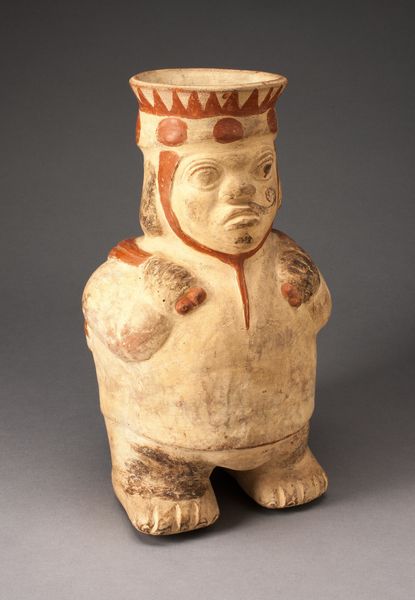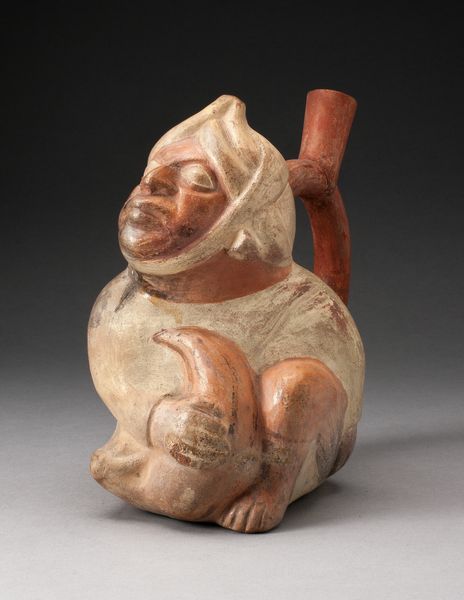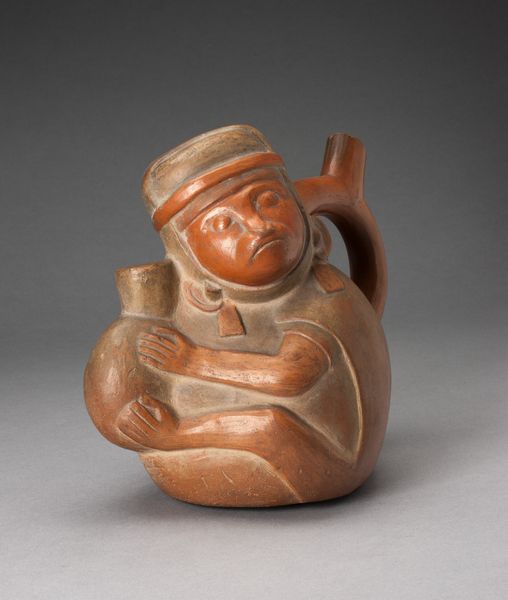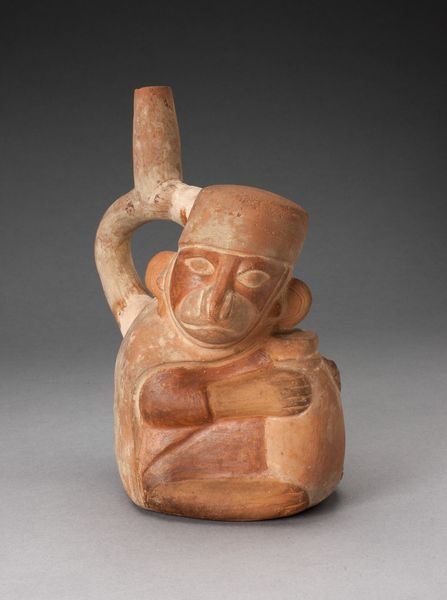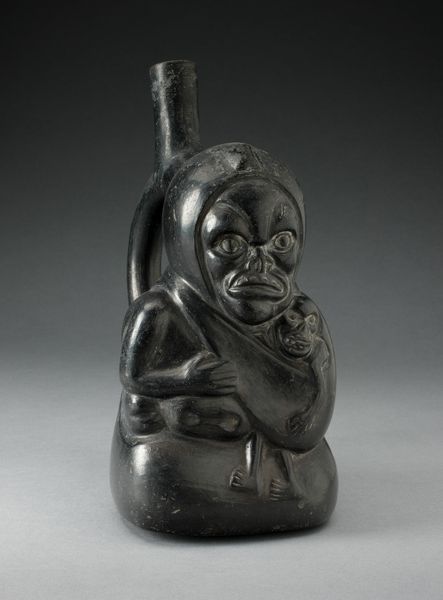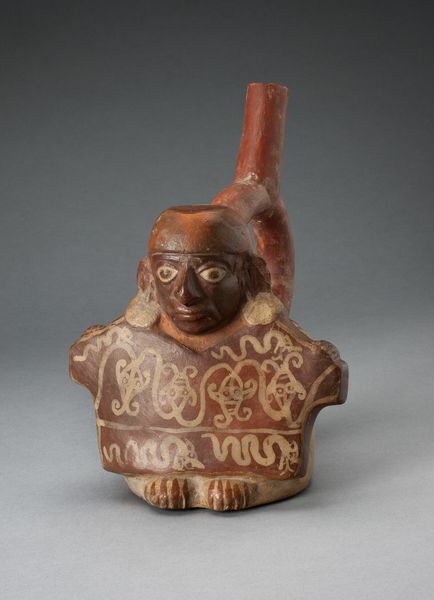
Portrait Vessel of a Blind Figure with Distorted Mouth c. 100 - 500
0:00
0:00
ceramic, sculpture, terracotta
#
portrait
#
ceramic
#
figuration
#
sculpture
#
terracotta
#
indigenous-americas
Dimensions: 20 × 17.8 cm (7 7/8 × 7 in.)
Copyright: Public Domain
Curator: Let's turn our attention to this intriguing object: a Moche ceramic portrait vessel, created sometime between 100 and 500 CE. It's currently held in the collection of the Art Institute of Chicago. Editor: Wow, there’s such a raw, almost painful quality to the way the figure’s features are rendered. The contorted mouth and vacant eyes create an immediate impression of suffering, perhaps even a kind of silent scream trapped in the clay. Curator: Precisely. This vessel depicts a blind figure, which invites contemplation of the social positions occupied by disabled individuals within Moche society. How did these identities intersect with societal roles, power structures, or spiritual beliefs? The distorted mouth, as you observed, is equally compelling. Does it suggest illness, or perhaps social ostracization? The Moche were remarkable for their ability to create ceramic portraits of great naturalism, which demands inquiry into representation of physical diversity and affliction within that visual culture. Editor: What's most striking, though, is the craft itself. Consider the process of forming this portrait with earth and fire. Each mark, each indentation speaks to the physical engagement of the artist with the material world. How was it fired? Where did they source the clay? What tools did they have available? I’m particularly drawn to the slip painting and the stirrup spout. The form itself invites speculation – did it hold water? Some ritual beverage? How was it handled, used, and valued in daily life? The creation and eventual discard, burial, or destruction of this work is a fundamental component of the portrait itself. Curator: Excellent point. These vessels often accompanied the dead, implying a functional connection between the terrestrial world and the spiritual plane. Therefore, the making of this work, and it's attendant process, suggests how individuals experiencing hardship might have been integrated into cosmological beliefs of the Moche. These vessels tell tales not merely of life, but also beliefs about death, afterlife, and ancestor reverence. Editor: It is a potent reminder that what we now call “art” was deeply embedded in a complex system of social and material relations, challenging a singular concept of the artist or an artwork divorced from its original setting. Curator: A testament to how disability, mortality, and the artistry of everyday life commingle, creating avenues to reflect on humanity across time. Editor: Indeed, understanding its construction and context deepens our regard for not only the artist but everyone involved with its creation, circulation and reception in Moche society.
Comments
No comments
Be the first to comment and join the conversation on the ultimate creative platform.
